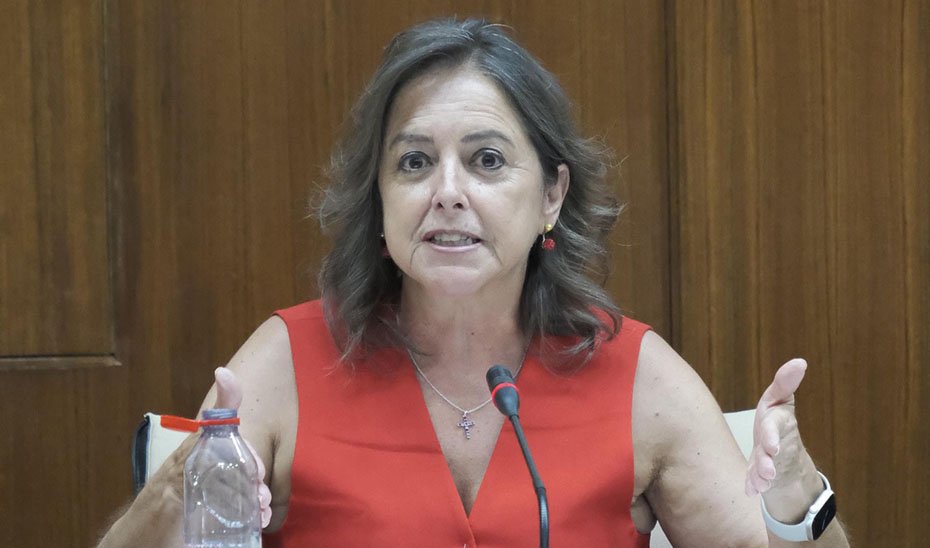The Minister of Sustainability and Environment of the Andalusian Government, Catalina García, appeared before the parliamentary committee to report on the restoration of wetlands in the autonomous community. In this regard, she emphasized that the Andalusian Administration has allocated over 15.4 million between 2023 and 2026 for the restoration of 4,933 hectares of wetlands under the Restoration, Transformation, and Resilience Plan (PRTR), funded by the NextGenerationEU program.
She highlighted actions such as the restoration of inland endorheic lagoons, including the Lagunas del Sur de Córdoba, with an investment of 2.3 million euros; the Lagunas del Hituelo and Grande de Baeza in the province of Jaén, with a value of 700,000 euros, or the restoration of several Lagunas in the province of Málaga, with a total of 909,645 euros, among others. Regarding the recovery of intertidal zones and marshes, she emphasized the restoration of the Brazo del Este in Seville, with over 810,000 euros; the Marismas de Cetina in Cádiz, with a total investment of 495,614 euros, or the restoration of various wetlands in the province of Huelva, with a budget allocation of over 520,000 euros, among other actions. She also mentioned the restoration of saline areas, such as the Salinas de Cabo de Gata, for 1,400,405 euros, and the Finca Salinera de Carboneros in the Natural Park of the Bay of Cádiz, for 698,755 euros.
During her speech, the Minister recalled that Andalusia is home to around 17% of the wetlands in the Spanish territory, which represents 56% of the country’s floodable surface area. «This wealth is not only quantitative but also ecological, cultural, and symbolic. In our estuaries, a large part of the marine species we consume daily reproduces, and our marshes harbor invaluable biodiversity,» she stated. She explained that wetlands play essential roles in regulating the water cycle, controlling floods, conserving biodiversity, and mitigating the effects of climate change. «They are also fundamental habitats for unique species and act as reservoirs of life, but also as indicators of the territory’s health,» she emphasized.
In this context, she highlighted the Inventory of Wetlands in Andalusia, which already includes 229 wetlands covering an area greater than 143,600 hectares. The latest addition has been the Haza de la Torre wetland in Cádiz. On an international level, she mentioned the 25 wetlands included in the Ramsar list, whose information sheets are being updated by the Junta in collaboration with the Ministry for Ecological Transition and the Demographic Challenge. «The fact sheets for the Lagunas del Sur de Córdoba and Tíscar have already been updated, reinforcing our commitment to international conservation agreements,» she noted.
She also emphasized the role of the Andalusian Wetlands Committee as a technical, scientific, and participatory coordination body that ensures compliance with the Andalusian Wetlands Plan, proposes conservation actions, promotes land stewardship, and issues reports for proper management. «It is a key tool for continuing to advance in effective and shared governance,» she pointed out.
Regarding planning, she informed that the Junta has begun the review of the Andalusian Wetlands Plan, in force since 2002, after evaluating its implementation between 2002 and 2023. This review will culminate in the new Andalusian Wetlands Plan Horizon 2030, aligned with national and European strategies. «Its goal will be to consolidate the recovery of habitats and species, preserve ecosystem services, and strengthen the environmental, economic, and social value of these areas,» she stated.
As part of the comprehensive ecological restoration strategy, the Minister highlighted the acquisition of several wetlands, such as the Laguna del Conde or Salobral in Córdoba, as well as other sites in the provinces of Málaga and Granada. These acquisitions will allow for the implementation of previously planned recovery actions.
Hydrodynamic Improvements in the Doñana Natural Space
In particular, she emphasized the Junta’s acquisition of the Veta la Palma and Tierras Bajas estates, which contribute over 8,700 new hectares of high environmental value to the public management of the Doñana Natural Space. The total investment amounted to 78.5 million euros, coming from own and European funds. «These estates are integrated into an iconic space and will allow for the implementation of hydrodynamic improvements, revegetation, naturalization of slopes, and studies on their ecological functioning,» she explained.
Catalina García also highlighted Andalusia’s participation in the LifeWetlands Project. In Andalusia, the actions will focus on the Lagunas del Sur de Córdoba and the Fuente de Piedra Lagoon in Málaga.
On a European level, she recalled that the new Regulation on Nature Restoration, approved in June, establishes the obligation to restore 20% of terrestrial and marine ecosystems in the European Union by 2030. Among the specific objectives for wetlands is the improvement of 30% of these ecosystems by that date, 60% by 2040, and 90% by 2050, with a priority on Natura 2000 sites. «This regulation represents a paradigm shift, conceiving restoration as an investment for human well-being, food security, and the fight against climate change,» she stated.
The Minister emphasized that all these measures are part of an integrated strategy that includes ecologically tailored restorations for each type of wetland, the acquisition of key lands, participation in major national and European projects, improvement of public infrastructure, and promotion of ecotourism and environmental education. «Institutional collaboration, especially in Doñana, has also been essential in consolidating these policies,» she concluded.

